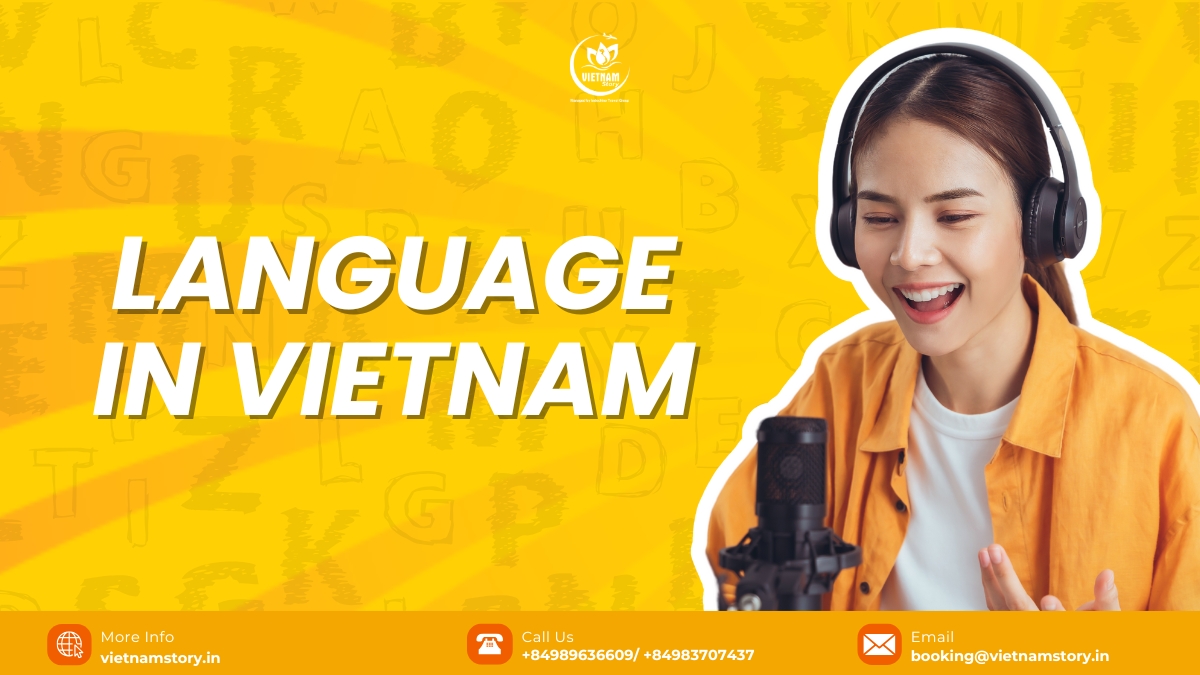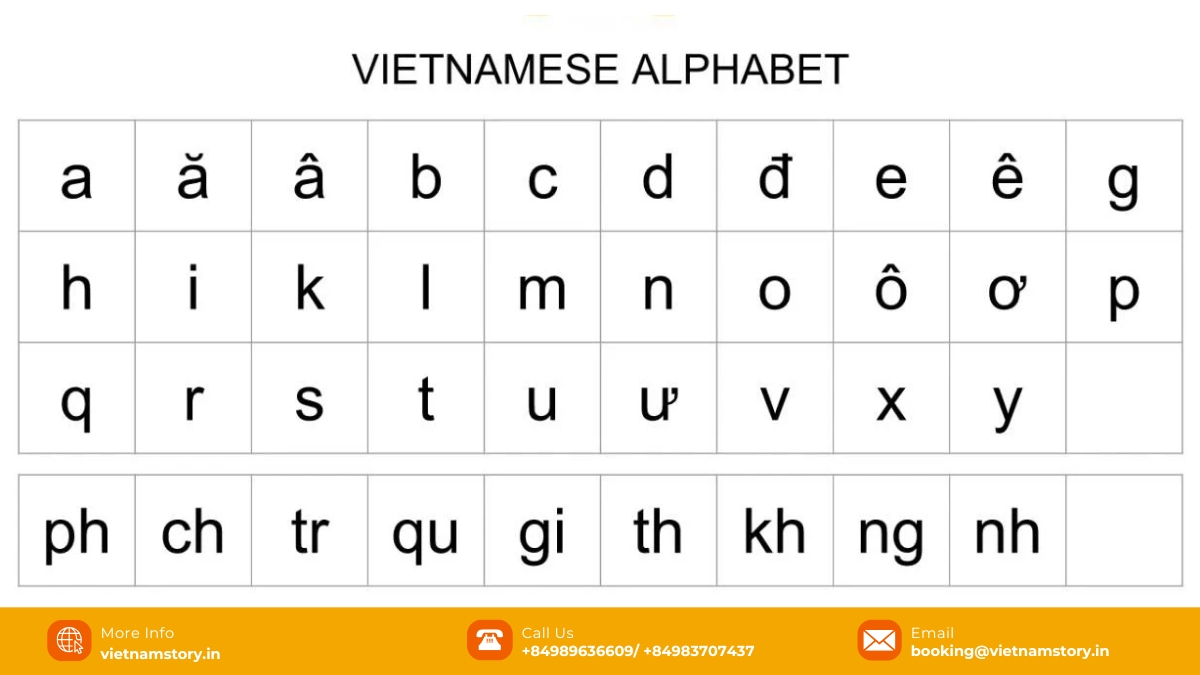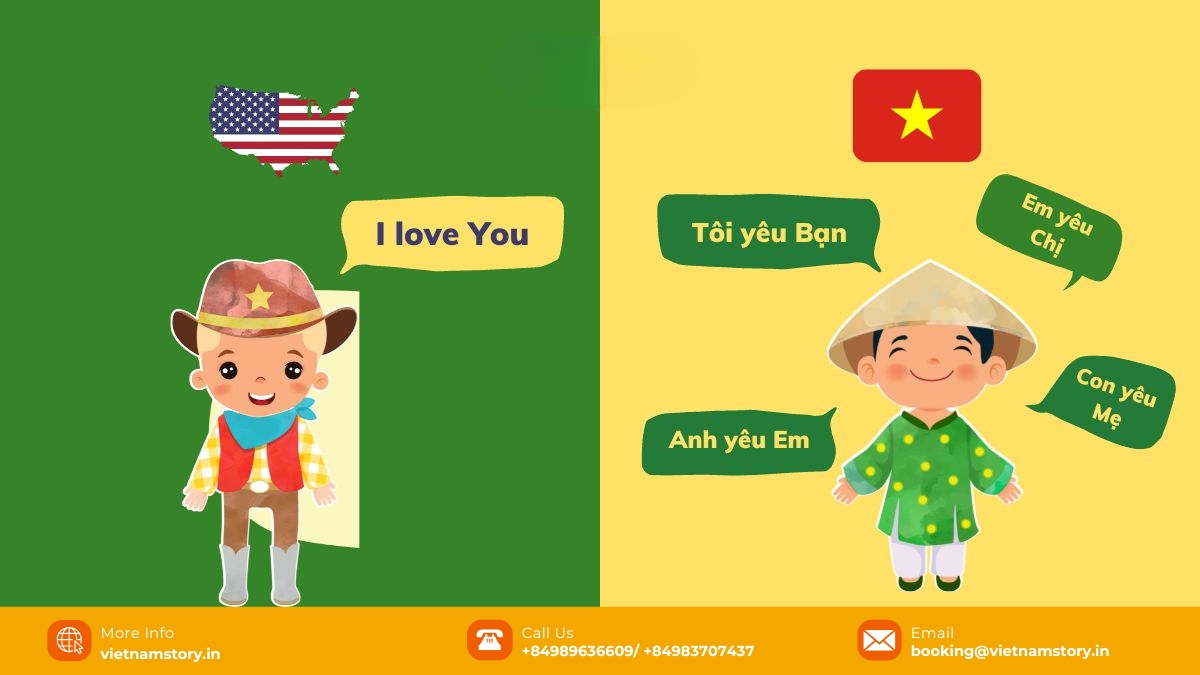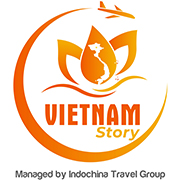Vietnam, a land of breathtaking landscapes, vibrant culture, and rich history, offers an unforgettable experience for travellers. For Indian visitors seeking to connect more deeply with this Southeast Asian gem, understanding the basics of its languages can transform your trip from a simple visit into a truly immersive journey. Besides language, proper planning also involves ensuring you meet entry requirements, so checking guidelines for visas for Indian tourists is a crucial first step.
While English is increasingly common in major cities and tourist hubs like Hanoi and Ho Chi Minh City, exploring the vast linguistic diversity of Vietnam requires a little insight. This guide delves into the Language in Vietnam, exploring the official Vietnamese language (tiếng Việt), its unique features, the country’s rich tapestry of over 110 officially recognized dialects and languages, and practical tips to help you communicate effectively during your travels.

Vietnamese (Tiếng Việt): The National and Official Language in Vietnam
Spoken by the vast majority (around 85-88%) of the population, Vietnamese serves as the single national and official language of Vietnam. It acts as a unifying force and the primary medium for education, administration, and mass media across the nation. Understanding its core characteristics is key to appreciating the linguistic landscape.
- Linguistic Family: Vietnamese belongs to the Austroasiatic language family, specifically the Viet-Muong sub-branch. This connection highlights its distinct roots compared to many neighbouring languages in the Kra-Dai or Sino-Tibetan families.
- Historical Influences & Loanwords: Centuries of interaction, particularly with China, have led to a significant portion of Vietnamese vocabulary being derived from Chinese (Sino-Vietnamese words), especially noticeable in formal, academic, and political terms – a characteristic showing heavy Chinese loanword influence. The French colonial period also introduced loanwords, primarily for modern concepts, food, and technical items.
- The Writing System – Chữ Quốc Ngữ: For much of its history, Vietnamese was written using adapted Chinese characters, known first as chữ Nho (Han script) and later developed into the native Chữ Nôm script. However, a pivotal shift occurred with the development and eventual adoption of Chữ Quốc Ngữ (‘national language script’). Pioneered by European missionaries like the Jesuit priest Alexandre de Rhodes in the 17th century and popularized in the early 20th century, this writing system uses the familiar Latin alphabet augmented with diacritics (marks above and below letters) to signify unique vowel sounds and crucial tones. This system dramatically increased literacy and is the script you will see everywhere in Vietnam today.
- Phonology – The Importance of Tones: Perhaps the most defining (and challenging for learners) feature is its nature as a tonal language. Vietnamese employs the use of tones – typically six in the Northern standard dialect – where the pitch contour of a syllable changes its meaning entirely. The word ‘ma’, for instance, can mean ‘ghost’, ‘mother’, ‘cheek’, ‘rice seedling’, ‘tomb’, or ‘horse’ depending solely on the tone applied. Mispronouncing a tone can lead to significant misunderstandings.
- Grammar Structure: Vietnamese grammar is analytic, meaning word order, not inflection (changes to the words themselves), primarily determines grammatical relationships. It typically follows a Subject-Verb-Object (SVO) structure, similar to English. Tense and aspect are usually indicated by adding marker words (like đã for past, sẽ for future, đang for present continuous) rather than changing the verb form.

Regional Dialects of Vietnamese
While a standard Vietnamese based on the Northern dialect exists, the language exhibits noticeable regional variation across its geographic distribution. The three main dialects are:
- Northern Dialect: Centered around Hanoi, this dialect is considered the basis for the standard, official language. It preserves all six tones distinctly.
- Central Dialect: Spoken in areas like Hue and Da Nang, it’s known for its unique pitch contours and some different vocabulary. Hue dialect, in particular, can sound quite distinct.
- Southern Dialect: Prevalent in Ho Chi Minh City and the Mekong Delta, this dialect often merges some tones (e.g., hỏi and ngã tones sound similar) and features differences in consonants and vocabulary compared to the North.
Despite these differences, the dialects are generally mutually intelligible, much like variations in English across different regions. Just as the spoken language varies, so does the climate across the country; understanding Vietnam’s weather patterns in the North, Central, and South is crucial for packing and planning your itinerary.
A Tapestry of Minority Languages
Beyond Vietnamese, Vietnam is a truly multilingual nation, home to 54 officially recognized ethnic groups. This results in a remarkable linguistic diversity, with over 110 distinct languages and dialects spoken. These languages belong to several major linguistic families including Austroasiatic, Kra-Dai (or Tai-Kadai), Sino-Tibetan, Hmong-Mien, and Malayo-Polynesian. While Vietnamese is the lingua franca, many ethnic minority groups maintain their mother tongues. Some prominent examples include:
- Tay: Spoken by around 1.7 to 3 million people, primarily in Northeastern Vietnam. It belongs to the Thai language family. Among some Tay communities, literacy in their native language has historically been characterized by a low literacy rate (around 5% or less).
- Muong: An Austroasiatic language closely related to Vietnamese, spoken by over a million people in mountainous regions like Hoa Binh and Thanh Hoa. It notably shows less Chinese influence than Vietnamese and uses a modified alphabet with extra consonants, while retaining the six tones.
- Cham: Belonging to the Malayo-Polynesian family, spoken by about 79,000 people in Vietnam (mainly in the central and southern coastal areas) and more in Cambodia. It has significant historical importance, linked to the ancient Kingdom of Champa and has the distinction of being the oldest-attested Austronesian language, reflecting its historical royal usage.
- Khmer: The official language of Cambodia, this Austroasiatic language is spoken by over a million Khmer Krom people in the Mekong Delta region of Southern Vietnam.
- Hmong: Part of the Hmong-Mien family, spoken by Hmong communities primarily in the mountainous regions of Northern Vietnam, as well as neighbouring countries. Various dialects exist.
- Nung: A Tai-Kadai language spoken by around 969,000 people, mainly in Northern Vietnam (Cao Bang, Lang Son). Similar to Tay, literacy in Nung has sometimes been marked by a low literacy rate.
Respecting and acknowledging this diversity is part of understanding the rich cultural fabric of Vietnam.
Foreign Languages: French and English
Vietnam’s linguistic landscape also includes foreign languages:
- French: A legacy of the colonial period, French was once the language of administration and education. Its influence remains visible in some architecture, cuisine, and loanwords. While not widely spoken today, it’s still known by some, particularly among the older generation.
- English: Increasingly important, English is the dominant foreign language taught in schools and used in business, tourism, and technology sectors, especially in major cities. For Indian travellers, English often serves as a practical bridge for communication in tourist areas, hotels, and restaurants.
Basic Vietnamese Words and Phrases for Travellers

Even knowing a few basic phrases demonstrates respect and can significantly enhance your interactions. Here are some essentials (pronunciations are approximate guides):
Greetings & Politeness:
- Xin chào (Hello): [Sin chow]
- Cảm ơn (Thank you): [Kahm uhn]
- Xin lỗi (Sorry/Excuse me): [Sin loy]
- Vâng / Dạ (Yes): [Vung / Ya] (Dạ is more polite, especially to elders)
- Không (No): [Khong]
- Tạm biệt (Goodbye): [Tarm Byeet]
- Không có gì (No problem / You’re welcome): [Khong koh zi]
Basic Questions:
- Bạn khỏe không? (How are you?): [Ban Kwe Khom]
- Bao nhiêu tiền? (How much money?): [Baow nyew tee-en?]
- Ở đâu? (Where?): [Uh dow?]
- (Taxi / ATM / Nhà vệ sinh) ở đâu? (Where is the taxi / ATM / toilet?): [(Taxi / ATM / Nya vey sin) uh dow?]
- Bạn nói tiếng Anh được không? (Can you speak English?): [Banh noi tee-eng an durkh khom?]
- Tôi không hiểu (I don’t understand): [Toy khong hee-eu]
Basic Numbers (1-10):
- Một (1): [Moat]
- Hai (2): [High]
- Ba (3): [Bah]
- Bốn (4): [Bone]
- Năm (5): [Num]
- Sáu (6): [Shao]
- Bảy (7): [By]
- Tám (8): [Tom]
- Chín (9): [Chin]
- Mười (10): [Mooy]
Practical Communication Tips for Indian Travellers
- Embrace Technology: Use translation apps like Google Translate. Download the Vietnamese language pack for offline use. The camera function is great for menus and signs.
- Pronunciation Patience: Tones are tricky! Listen carefully and don’t be afraid to try. Locals generally appreciate the effort, even if it’s not perfect.
- Non-Verbal Cues: A smile and polite gestures are universal. Use an open hand to point if necessary, rather than a single finger.
- Show Respect: Using basic greetings like Xin chào and Cảm ơn goes a long way. Politeness is highly valued in Vietnamese culture.
- Write it Down: If pronunciation fails, show your request or destination written in Vietnamese (using your phone or notepad). This bypasses tonal challenges. While navigating communication is key, practical planning also involves budgeting. Researching the estimated Vietnam trip cost from India can help you manage expenses effectively throughout your journey.
- Be Aware of Dialects: If someone doesn’t understand you, it might be a dialect difference. Try rephrasing simply or using your translation tool.
Pro tip: If you’re visiting during local celebrations such as the Mid-Autumn Festival, learning simple greetings like Tết Trung Thu vui vẻ (Happy Mid-Autumn) can delight locals and earn you warm smiles
Conclusion
The languages of Vietnam offer a fascinating window into its complex history and vibrant cultural tapestry. While mastering Vietnamese is not essential for a tourist visit, especially for Indian travellers often adept with English, learning basic phrases and understanding the significance of aspects like tones and politeness unlocks a richer, more rewarding experience.
Your effort to communicate, even minimally, in the Vietnamese language or showing awareness of the local linguistic diversity will be warmly received, opening doors to genuine interactions and a deeper appreciation for the wonderful people and culture of Vietnam. Chúc bạn một chuyến đi vui vẻ! (Wish you a happy trip!)
READ MORE:











